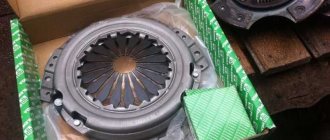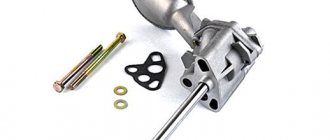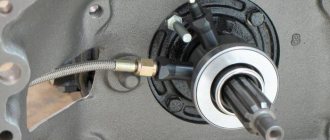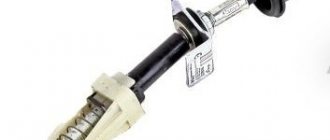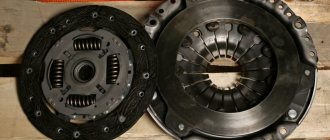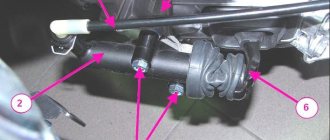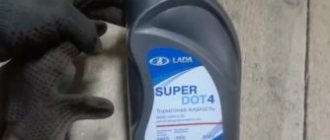The smell of burning rubber
If the clutch is burned out or damaged, a pungent smell of burnt rubber will appear inside the car. This may indicate slippage and wear of the mechanism. Sometimes a burning smell can indicate a problem with the hydraulic system.
To fix the problem, you need to contact a service station. Ignoring maintenance can lead to unpleasant consequences.
It is worth noting that a burning smell does not always indicate problems with the clutch. Sometimes the cause can be burnt brake pads. But then the burning smell is not so pungent, and it mostly goes outside rather than into the salon.
Procedure for removing the mechanism
It is easiest to repair or replace the clutch basket when the entire engine is overhauled. If the power unit is removed, then you can inspect, repair or replace worn parts of this part of the car without much effort. In this case, dismantling the unit does not present any difficulties.
Let's take a closer look at how to disassemble the clutch and how to remove the failed part. The operation scheme is simple. The main thing is to comply with the technological regulations given below:
- First you need to remove the gearbox (gearbox). If the gearbox does not need to be repaired, then there is no need to disconnect the drives before removing the battery and mass flow sensor and draining the oil.
- Unscrew the drive (cable) that activates the mechanism and remove it.
- Unscrew and remove the starter.
- Unscrew the top bolts securing the box.
- Unscrew all electrical wiring harnesses and the speed sensor chip.
- Loosen the drive nut on the right side and completely unscrew the nut on the left side.
- Unscrew the suspension arm.
- Unscrew the ball joint.
- Remove engine protection.
- Remove the reverse signal switch chip.
- Unscrew the torque rod from the gearbox and remove the lower cover of the clutch housing.
- Loosen the nut of the gearbox control drive clamp and remove the rocker.
- Unscrew the lower bolts and gearbox mounting nut.
- Jack up the engine.
- Unscrew the gearbox from the pillow.
- Remove the box and gain access to the necessary component of the car.
Vibration when starting to move
Strange vibrations at the moment of start are a sign of wear on the release bearing. Also, pressing may be accompanied by a loud hum, which is explained by a strong load on the deformed part. A driver who notices such symptoms should contact a service center and have the bearing replaced.
Also, vibrations when pressing the pedal can be caused by replacing a part with a new one. In this case, you can wait a little, and if the problem does not go away on its own, contact service.
Driver mistakes that lead to clutch failure
- Many novice motorists keep the clutch pedal (especially when stopping temporarily, for example, at a traffic light) constantly depressed (the author of the article also sinned with such things at one time). This should not be done because in this position the release bearing is constantly working, which will require replacement much earlier than usual.
- You should avoid sharp starts, as well as too smooth ones at high engine speeds.
- The clutch pedal should be released completely to avoid slipping and increased wear of the unit.
Wheel slip
To determine the serviceability of the clutch, you can perform a simple test.
The driver should accelerate at a low speed - 60-70 kilometers per hour - and check if the wheels are slipping. If this happens, it means the mechanism is not functioning properly.
Also a sure sign of a breakdown is the car running too slowly when the engine is running at full power. Wheel slip can also occur when the pedal is pressed. This can lead to disc deformation and friction lining burning.
How do you know when it's time to change the clutch?
Replacing a clutch is quite a labor-intensive job. To get to the clutch, you need to remove the transmission. If you are an inexperienced mechanic, then go to a professional auto repair shop.
In mechanics, a clutch is a mechanism whose operating principle is based on the action of sliding friction. Often the term "clutch" is used to refer to one of the components of a vehicle's transmission that is used to connect the engine flywheel to the transmission. Depressing the clutch pedal temporarily disconnects the power transmission from the engine.
The clutch mechanism is necessary so that you can start smoothly from a standstill, without jerking. The speed of the car begins to increase only at a certain minimum number of engine revolutions. The clutch is also used when it is necessary to match the vehicle speed and the engine crankshaft speed, that is, it ensures smooth transmission of torque from the engine to the gearbox and, if necessary, at some point completely disconnects the manual transmission gears from the engine transmission mechanism.
There are several different types of clutch. Often these are one, two or more friction discs, pressed tightly against one another or against the flywheel using springs.
When the driver presses the pedal, the clutch discs are disconnected, and an air gap appears between them; the clutch is disengaged at this moment, and torque is not transferred from the engine to the gearbox. If the pedal is released, the clamping springs return the discs to their initial position, and they again come into close contact; the torque from one drive disc is transmitted through the action of friction to the driven disc.
The clutch is one of the very important components of a car. Various types of these mechanisms are classified according to the control method, the type of friction operating in this case (dry friction or wet friction), the number of disks, and so on. As engine power increases, torque also increases; accordingly, double-disc clutch systems are used, which have a longer service life.
Sooner or later, clutch discs wear out and require replacement. Clutch malfunctions can lead to failure of other parts of the car, for example, gears of the gearbox mechanism, or even to the inability to start the car on the road.
If, when the clutch is disengaged, a strong noise is heard, which is created by the release bearing, this indicates that it is worn out. Clutch wear leads to increased, wasteful fuel consumption as a result of a significant loss of engine power at this automotive unit.
One of the problems with the clutch is slipping of the discs when the pedal is freely released. As the discs slide past each other, they become very hot, which leads to rapid deformation or failure of the discs. Friction linings burn, and a specific smell can be heard inside the car.
How can you check problems in the clutch system yourself, without going to a service station, as they say, the traditional way? The driver may notice the discs slipping at first in high gears. At the same time, the engine speed increases, but the speed does not increase. Having noticed this state of affairs, it is necessary to take action, as the process develops, intensifies, and, in the end, it will reach the point that the car simply cannot start moving when first gear is engaged.
What is the service life of the clutch mechanism? The answer to this question is ambiguous. After all, the service life of this mechanism depends not only on the quality of production, but also on the experience and driving technique of the driver himself. According to the unspoken rule of motorists, discs are replaced after driving eighty to ninety thousand kilometers. But these indicators can deviate in any direction.
· The clutch is leading, that is, the clutch is not fully disengaged. This can be noticed by a strong crunching sound when changing gears of a stationary car;
- · The car jerks away even when the pedal is released quite smoothly;
- · The clutch pedal is depressed all the way, but does not return to its initial position;
- · Strong vibration is felt when the clutch is engaged.
It will be a shame to get stuck somewhere in the middle of the intended path, so don’t put off replacing the clutch for too long.
If you have some experience, a special tool called a gauge will help you measure clutch wear. By following the instructions and having a lift, you can measure the thickness of the disk without dismantling it.
Replacing the clutch often requires removing the transmission. In general, it should be noted that replacing a clutch is a rather labor-intensive procedure, so if you don’t have the time, experience, great desire or anything else, then you need to go to a service station. The procedure will not be cheap.
With careful use and careful driving, you do not have to change the clutch often.
What can become an alarm bell and a signal for diagnosis - this is discussed in our article. Here you will learn how to replace a clutch and will be able to supervise the service center technicians.
When driving with a worn clutch, fuel consumption increases and the power of the internal combustion engine is significantly “lost.”
Reasons and consequences that you will avoid if you go to the service station on time:
- Do you hear a loud noise when you depress the clutch pedal? there is a possibility that the release bearing is worn out;
- the smell of burning in the cabin indicates that the clutch discs are slipping relative to each other, so that the friction linings on them burn;
Damage to friction linings
- Strong jerks when shifting gears often indicate that the damper springs installed on the driven disk have failed.
Experts and car manufacturers recommend carrying out clutch diagnostics every 80 - 100 thousand km.
If the recommended mileage has not yet been completed, but you have already noticed the following “symptoms,” perhaps it’s time to hurry up with a replacement:
- changes in habitual driving dynamics, especially when climbing;
- increasing the free play of the clutch pedal;
- jerks when changing gears and starting off;
- heavy car acceleration and poor traction when the load increases;
- shifting gears with great effort;
- burning smell when engine speed increases;
- increased vibrations and extraneous sounds (such as crunching and grinding).
The first thing any driver (even with little experience) will notice is the discs slipping in high gears, that is, as the speed increases, the speed does not change.
And here you have a choice: change the clutch as soon as possible, or one “fine” day you simply won’t move.
Whether or not you will be upset when you find out that the manufacturer does not indicate specific figures for clutch service life. If, for example, in the brake system, it is clearly stated that the thickness of the brake disc should be such and such, then why is this not applicable to the clutch?
The fact is that clutch wear depends on many reasons, and first of all, of course, on how the driver shifts gears and in what mode the clutch is used. And, although the thickness of the clutch disc cannot be measured, the same Like the thickness of the brake disc with a caliper, there are ways to measure it. There are two of them.
The first way to measure the thickness of the clutch disc is with a special measuring gauge. This method does not require dismantling the clutch; it is performed on a lift. But you are unlikely to use it. The second method is simpler to implement and allows you to determine the wear of the clutch disc in order to replace it.
Replacing the driven disk is a procedure provided by the manufacturer, because The driven disk is a consumable part. The check is carried out as follows: with the engine running, you need to put it in high gear, accelerate it, and if the car does not stall, this means that the driven disk is worn out and requires replacement.
It must be remembered that such a check of the thickness of the clutch disc is not technologically correct, but it is effective and allows you to determine the condition of the disc with extreme precision. As already mentioned, the service life of any clutch is determined by its operating conditions. Without going into technical details of the interaction of clutch parts, you should understand that basically the life of the clutch and the wear rate of the discs depend only on the driver.
A clutch of the same quality and manufacturer can last 5,000 km for one driver, and 100,000 for another. Participation in drag racing, frequent slipping, abrupt starting at high speeds, ingress of foreign liquids and objects, unqualified installation and adjustment clutch - all this reduces the life of the clutch.
How to check the clutch? The clutch is checked using already proven and reliable folk methods, and only by them. Naturally, in addition to disassembling the clutch. We are talking about how you can check the clutch of your car yourself, and then decide whether you need a more in-depth diagnostic with dismantling the clutch mechanism.
So, let's start checking the clutch on the main points.
Clutch slippage. Those. again we are talking about wear on the driven disk when it is not fully pressed against the flywheel, which means there is no full clutch.
1. put the car on the handbrake and start the engine;2. engage a higher gear: 3rd or 4th;3. Slowly depress the clutch and “give” the gas; 4. When the handbrake is adjusted, the car engine should stall. If this does not happen, then it is time to think about replacing the clutch disc.
The clutch “drives”, i.e. it doesn't turn off completely. This malfunction is accompanied by difficult gear shifting, or extraneous noises and sounds when changing gears. And the gearbox is hardly to blame here. Checking the clutch.
1. the engine is idling; 2. Depress the clutch pedal completely and engage first or reverse gear;3. If the gear is engaged with uncharacteristic effort, and at the same time you hear extraneous sounds, then the driven disk does not completely move away from the flywheel, i.e. the clutch “drives”;4. you need to pump the hydraulics and adjust the free play of the clutch pedal;5. check again, if nothing has changed, then it’s time to go to a car service for a more in-depth diagnosis of the clutch.
Noise when disengaging the clutch
A loud noise when the clutch is disengaged also indicates a faulty release bearing. Usually in such situations the car “eats” too much gasoline over short distances. If the part is new, then at first such noise is considered normal. Over time it goes away on its own.
If at least one of these signs of clutch malfunction appears, the driver must immediately contact a service station. Using a worn-out mechanism can lead to unexpected car breakdown or an emergency on the road. In addition, saving on simple maintenance can lead to larger costs in the future.
Mistake #3: Overloading and using a trailer
photo: wheelsforwomen.co.uk
The clutch will also fail faster if the vehicle is loaded. In this case, the overload may not go beyond the passport data, but if you carry hundreds of kilograms in a passenger car over and over again for many years, know: the clutch on your car will last noticeably less than on those cars that did not carry heavy loads.
Every start from a traffic light, every switch under overload will force the disk to work at the limit, causing premature wear.
The clutch will suffer no less if you transport a loaded country trailer or tow other cars “on a tie”.
The advice suggests itself. If you want the clutch to last longer, do not overload the car. It is better to make more trips to the country than to try to remove the entire crop in one go.
see also
Double Clutch Shift Pattern, Why Use It, How It Works, and How to Apply It in Everyday Situation?
Here are the basic tips for motorists who are accustomed to taking care of their car and avoiding premature breakdowns, the repair of which is expensive and quite problematic.
How much does a standard hour of labor and spare parts cost to replace a clutch?
photo: autobild.de
To understand that clutch failure is not a very cheap “pleasure”, let’s give an example of several packages (basket, release bearing, disc) for popular brands and the cost of replacing them
Lada Vesta
Lux clutch kit: 4.5-5 thousand rubles
www.exist.ru
Lada Granta
SACHS clutch kit: 5-6 thousand rubles
www.exist.ru
Kia Rio
SACHS clutch kit: 5-7 thousand rubles
www.exist.ru
Hyundai Solaris
SACHS clutch kit: 7 thousand rubles
www.exist.ru
You can also independently determine the conditional degree of wear of the disk:
- Place the car on a level surface and set the parking brake
- start the engine and let it warm up
- engage 1st gear and slowly lower the clutch pedal, pay attention at what stage of the pedal stroke the clutch engages.
- at the very beginning - the disc is in excellent condition
- in the middle - the disc is worn out by 40-50%
- at the very end or the clutch begins to slip - the disc is at a critical stage of wear and must be replaced urgently.
You can buy fuel clutch discs (as well as other spare parts, components and consumables) in the IXORA store. Qualified managers will definitely help you make the right choice and answer all your questions. Contact us, it’s profitable and convenient.
| Manufacturer | Detail number | Name | Applicability* |
| VALEO | NS73 | Clutch Disc for Nissan Micra | Nissan Micra |
| VALEO | 411004D030 | Clutch Disc for Hyundai Porter | Hyundai Porter |
| VALEO | SY12 | Clutch disc for Peugeot 408 | Peugeot 408 |
| VALEO | SZ04 | Clutch Disc for Suzuki Jimny FJ | Suzuki Jimny FJ |
| VALEO | SZ11 | Clutch disc for Subaru Justy II | Subaru Justy II |
| VALEO | TY43 | Clutch disc for Toyota Avensis I | Toyota Avensis I |
| VALEO | VW06 | Clutch disc for VW Scirocco | VW Scirocco; Caddy |
| VALEO | VKD25383 | Clutch Disc for Hyundai Getz | Hyundai Getz |
| VALEO | VW14 | Clutch disc for VW Golf II | VW Golf II; Caddy |
| VALEO | 802669 | Clutch disc for Mitsubishi Colt | Valeo HYUNDAI ACCENT |
| VALEO | 803285 | Clutch disc for Mitsubishi Colt | Mitsubishi Colt |
| VALEO | 803589 | Clutch disc for VW Caddy I | VW Caddy I |
| VALEO | 803298 | Clutch Disc for Honda Civic | Honda Civic |
| VALEO | 803299 | Clutch disc for Honda Accord IV | Honda Accord IV |
| VALEO | 803307 | Clutch disc for Mazda MX-6 | Mazda MX-6 |
| VALEO | 803316 | Clutch disc for Nissan Sunny Y10 | Nissan Sunny Y10 |
| VALEO | 803350 | Clutch Disc for Mitsubishi Space Gear | Mitsubishi Space Gear |
| VALEO | 803351 | Clutch disc for Mitsubishi Space Runner | Mitsubishi Space Runner |
| VALEO | 803440 | Clutch disc for BMW 3 | BMW 3 |
* Please check the applicability of parts specifically for your car with our managers by phone (calls within Russia are free).
You can get professional advice when selecting a product and detailed information on all your questions by calling (calls within Russia are free).
Why does the clutch slip?
We recommend that you trust clutch replacement to professionals in a specialized service.
But, if you want to save money, you can change the clutch discs and springs yourself. Be prepared for the fact that this will require a lot of time and effort, and you will need special tools to disassemble the box. Also, arm yourself with a service manual; you will need it to check the standards for the production of clutch elements.
First, remove the plastic, then the clutch cover itself; depending on the model, it can be located either on the right or on the left side. Next, you need to disconnect the clutch cable if it is on the same side of the cover. Under the cover you will see the entire clutch mechanism. Next you need to remove the bolts with the pressure springs (if they are stretched, they need to be replaced), and after them you need to remove the pressure plate. Behind it you will see all the other disks.
Remember, or better yet, write down the sequence of installation of the clutch discs; the basket may contain discs of different types and sizes. Behind the first friction disc you can notice two or three small rings - these are a washer and a diaphragm spring, they are needed for the clutch to engage smoothly. Without them, the clutch will engage with a strong jerk, so do not lose them and put them in place in the correct position. Look at which discs are worn out and require replacement (usually friction discs). They are convenient to purchase and replace as a set. Steel wheels may have a coating that can be cleaned. They require replacement when they become thin and show signs of wear.
You may need a special tool to remove the drum. Check the basket and drum for signs of wear. Please note that with long-term use, along with the clutch, the basket also wears out, and wear appears on its slots. The damaged basket, unfortunately, also requires replacement. After checking, the drum and basket can be put back together.
Before assembling the entire mechanism, new discs must be soaked in the engine oil that will be filled. After this, you need to assemble the disks in the correct order, then insert the pressure disk and screw it with bolts. The first and last discs have special gaskets, do not forget to change them. It is impossible to assemble the clutch without gaskets, as they protect the discs from the strong pressure of the box. Pay special attention to the diameter and length of the springs, as well as their tightening torque when installing the clutch. To do this, use a torque wrench.
Then close the box with a lid, attach the cable and adjust its tension, leaving 10-15mm
. freewheel. If the free play is too large, the clutch will “drive”, that is, the motorcycle will move even with the clutch depressed. If there is no free play at all, when the lever is released, the clutch may remain pressed and the motorcycle will begin to slip.
